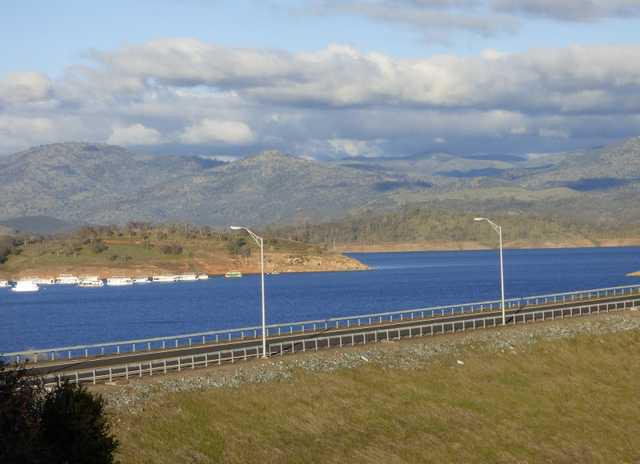In what was described as a "historic" day for Turlock Irrigation District, the water agency's Board of Directors yesterday gave General Manager Casey Hashimoto permission to file the final license applications for Don Pedro and La Grange - a milestone in the relicensing process for both projects, which first began over six years ago.
"These projects are extremely valuable resources that impact both water and electric customers," said Hashimoto.
TID's previous license for Don Pedro, which is held jointly with Modesto Irrigation District, expired on April 30, 2016, and the relicensing of the Don Pedro Project in conjunction with the Federal Energy Regulatory Commission has been ongoing since February 2011. That same year, the commission also decided that the districts' La Grange Hydroelectric Project needed a license, and in December 2012, the process began.
"During the relicensing processes, the districts have worked to develop the most focused, the most recent and the most collaborative science on the Tuolumne River. That science is the foundation of this application, which is now being referred to as the Tuolumne River Management Plan," said Hashimoto.
The Tuolumne River Management Plan was created after extensive public outreach and over 30 FERC-required studies, ranging from models simulated to determine water temperatures to fish population modeling in order to record the migration of local species.
Using this data, a plan that will both benefit local agricultural and municipal communities by maintaining their water supply as well as protect the region's native fish was developed. The plan also supports recreational opportunities along the lower Tuolumne River, and ensures protection for cultural, terrestrial and recreation resources at the Don Pedro and La Grange projects.
"We truly believe the Tuolumne River Management Plan is a comprehensive plan based on science, and benefits both the ecosystem and the communities we serve," said Hashimoto. "It's balanced, it's sustainable and it's achievable."
For Don Pedro, key improvement measures of the Tuolumne River Management Plan include flow measures, non-flow measures (like predator control, gravel improvement and the removal of invasive plants), recreation measures (such as increased flows for boating) and management plans. At the La Grange project, features like a sluice gate barrier and a recreation access trail will be added, as well as a historic property management plan, dissolved oxygen monitoring and the formalization of a flow to plunge pool.
Protecting and expanding the fall-run Chinook salmon and O. mykiss populations of the lower Tuolumne River is one of the plan's main goals, and in-river improvements were only decided upon after around $32 million in scientifically-based research.
"We never lost sight of this...you invested heavily in the science," Steve Boyd, Director of Water Resources and Regulatory Affairs, told the Board. "We held our feet to the fire and said we'll follow that science. We'll take it where it leads us and we're going to stick to it, and I think you'll see it in the plan that we have."
To help increase the low survival rate of fry and juvenile fall-run Chinook, the Tuolumne River Management Plan aims to address the large population of non-native predator species, like black bass and striped bass, through means such as an exclusion weir, fyke trapping, boat electrofishing and fishing derbies. The goal is an overall 10 percent reduction in predation rate, said Boyd.
"Our studies show that less than three percent of out-migrating juvenile fall-run Chinook salmon make it to the mouth because they are consumed by nonnative predatory species," said Boyd. "So, with the science that we've paid for and we've developed, we feel we need to take care of that stressor first."
Other measures to protect native fish include the introduction of gravel to create more room for spawning, gravel quality improvement through cleaning, water hyacinth removal and a restoration hatchery.
The plan also includes preferred flows for the Tuolumne River during five water-year types, including wet, above normal, below normal, dry and critical. Flows proposed by the plan allow for about 80-90,000 acre feet more water than currently allowed by FERC during the different water-year types.
As a result of all measures proposed by the Tuolumne River Management Plan, TID expects to see about 17.2 fall-run Chinook salmon smolts from each female spawner, compared to 6.32 smolts with current FERC water flows. Increased flows, as proposed by the state, would only yield about 9 smolts per female spawner.
The next steps in the relicensing process will be to determine if the districts' applications for relicensing and licensing are complete, and whether or not all information necessary to complete a single Environmental Impact Statement for both projects is provided.
The submission on final applications is just the end of the beginning of the process, however, said Boyd.
"This water is the lifeblood of our entire community. This whole region is supported by this river," said Director Michael Frantz. "This plan balances the needs of the people with a healthy fishery, and it's 21st century science and 21st century stewardship and I'm proud to be part of it. It's a historic day."
For more information on the Don Pedro relicensing and La Grange licensing, visit www.donpedro-relicensing.com or www.lagrange-licensing.com.





